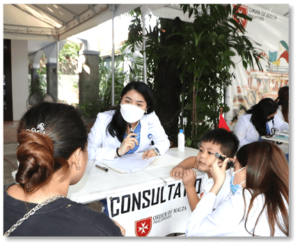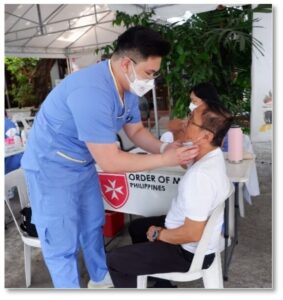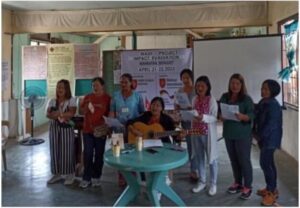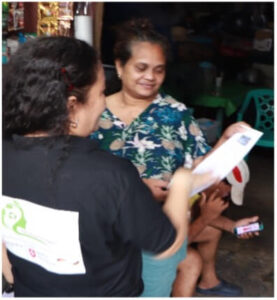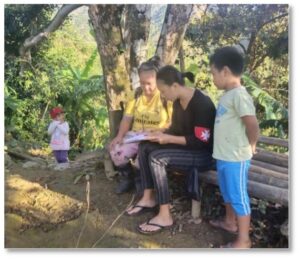The multi-drug therapy (MDT), a type of treatment that consists of giving patients a combination of drugs such as lamprene, rifampicin, and dapsone, was endorsed by the World Health Organization (WHO), in 1981.
Sometime in 1986, the World Health Organization suggested, and it was agreed, that Culion Island could be experimental ground for the multi-drug therapy, with doctors’ and the administration staff’s wages to be shouldered by the organization.
Fundacion ANESVAD acknowledged that “had it not been for the experience [the medical staff] gained in Culion, they never would have been able to help lepers in other countries.”
Dr. Arturo C. Cunanan, Jr., who grew up in Culion, studied leprology abroad after earning a scholarship from the Culion Foundation. His parents were not Hansenites, although his grandmother was. He became the primary force advocating for the implementation of the Multi-Drug Therapy (MDT) for lepers in 1987. By that year, 121 patients were already on the treatment.
It was a daunting task, given the community’s fatalistic orientation, which had long been resigned to accepting the normality of leprosy in their daily lives — they who had no hope. After years of relapse monitoring, still, no treatment had been found, with various drugs only serving as temporary relief rather than all-out cures. But the Multi-Drug Therapy pioneered by the World Health Organization aided, among others, by a Filipino, was, fundamentally, and finally, declared the cure for Hansen’s Disease in 1987.
Father Ola had even lived long enough to see the first healed patients that same year — dying in peace only a year later on September 10, 1988. He was laid to rest by an entire procession of his flock who loved him and mourned his passing deeply. He was buried at the church, his coffin draped in both the Spanish and Philippine flags (after some debate, which ended in the compromise). His death symbolized the end of an old era, and a new beginning for Culion, to which he had contributed so lovingly in so many ways, materially, emotionally, and spiritually.
By 1998, the experiment had demonstrated a surprising success: only four patients remained who were leprosy-positive, from the original 780 who had received the MDT; Hansen’s Disease was officially declared a non-public health hazard by 2000. WHO then finally declared Culion Island leprosy-free in 2006 — a whole century after the colony was established.
No longer is Culion the “land of the living dead,” but a fellow-island of the nation, bearing precious history on the Philippines’ role in eradicating leprosy worldwide, and the important role played by the Philippine Order of Malta largely through the efforts of Don José, and his merry band of Three Musketeer-Knights. Ultimately, the world can thank Culion and all the people and organizations that cared for its populace, to make leprosy worldwide a disease of the dark past.
Cecilia Piñones
The Sovereign Military Order of Malta’s Executive Director, Cecilia Piñones was born to former Hansenite parents in Culion on December 17, 1959.
Being the fourth child, she said that, as an infant, no longer was there a need for her to be separated from her mother, (whose illness had already started to subside from years of MDT treatment), unlike her two older siblings who had to be reared in nurseries after their sixth month. Growing up, neither she nor her four siblings were stricken with leprosy.
She recalls being tested by Culion’s first leprologist, Dr. Casimiro Lara, who was also the chief physician at the Sanitarium and declared negative for Hansen’s Disease.
Cecille, her nickname, applied for, and was granted, a scholarship by the Culion Foundation, after her high school graduation. She traveled to Manila to take up Pharmacy at the University of Santo Tomas, excelled, and graduated with a Bachelor of Science degree, majoring in Pharmacy in 1982. Instead of returning to Culion, she applied and was accepted for work in the most prominent pharmaceutical companies, and also a position at the Makati Medical Center.
But her father asked her to return to Culion, where job opportunity waited her there, he said. After much deliberation, Cecille chose to return to repay a debt of gratitude for the opportunity to attain a college degree.
At the Culion Foundation where she was assigned, Cecille forged close friendships with members of the Order of Malta who also were members of the Foundation’s board.
“They were very much like family,” she said. Don Pedro Picornell invited and recommended her for work at the Order of Malta office in Manila which she accepted, starting work there in 1987, where she continues to serve with great fervor, to this day.
As part of her Hospitaller duties, she travels all over the Philippines, giving out medicines, relief goods, and Toms children’s shoes. She implemented livelihood projects in both rural and disaster areas. How she manages to keep several balls in the air without dropping one is a miracle in itself. Everyone loves Cecille, overworked but forever cheerful — and ever at the ready to help the needy in the hinterlands, as well as city-bound Dames and Knights of Malta.

Sovereign Military Hospitaller Order of St John of Jerusalem of Rhodes and of Malta
1120 R. Hidalgo Street, Manila, Philippines Tel. +287080860 | orderofmaltaphilippines@gmail.com
